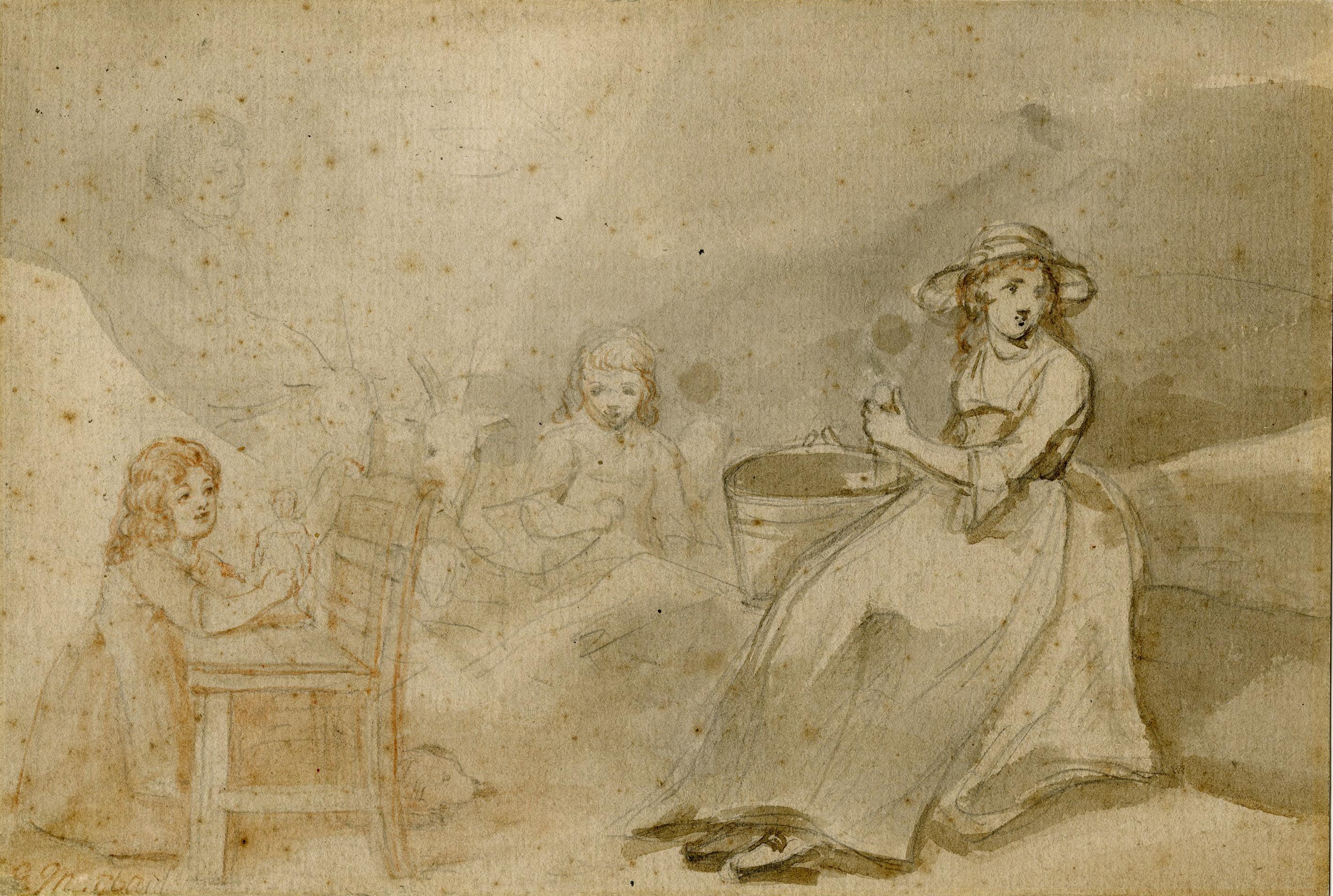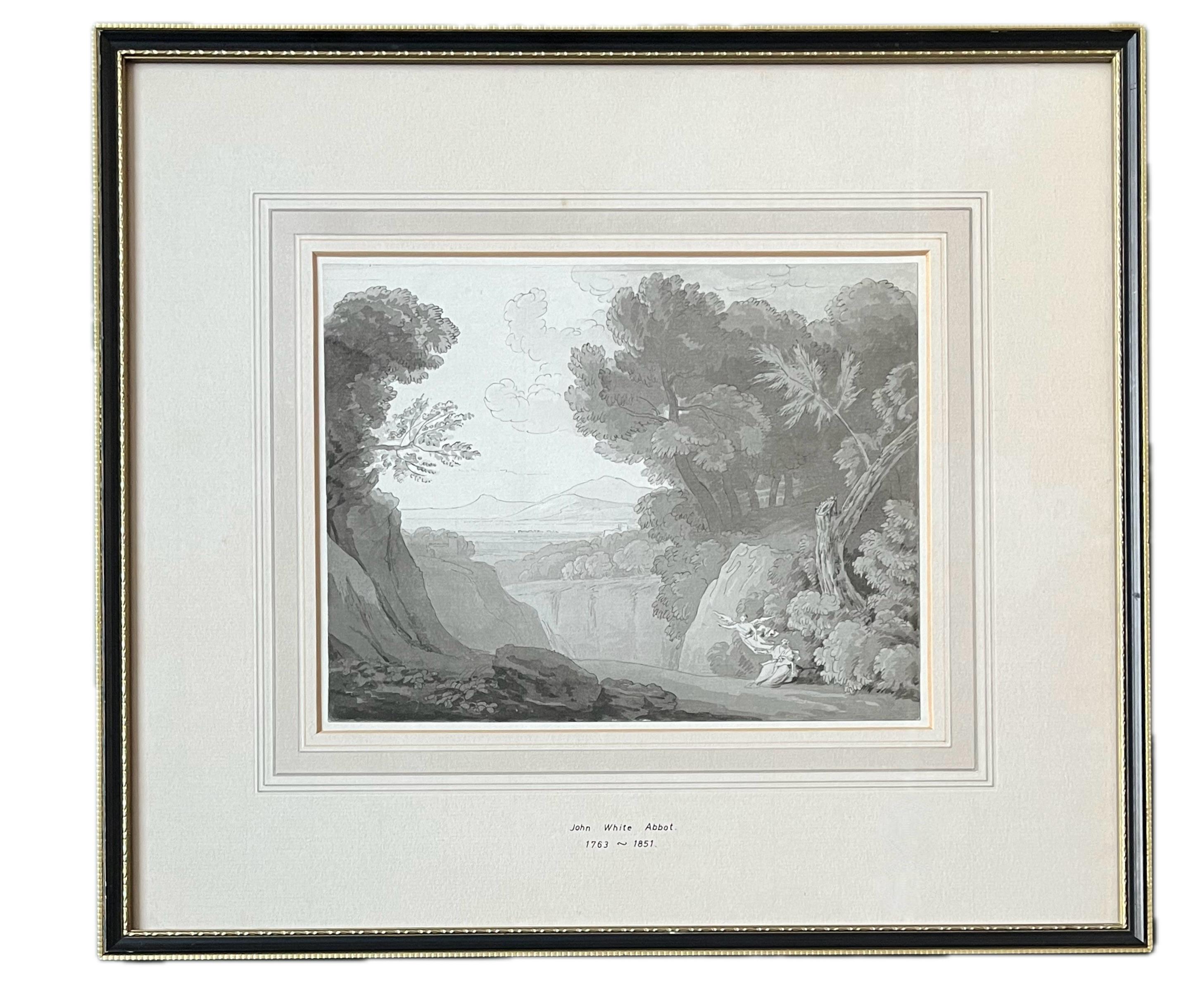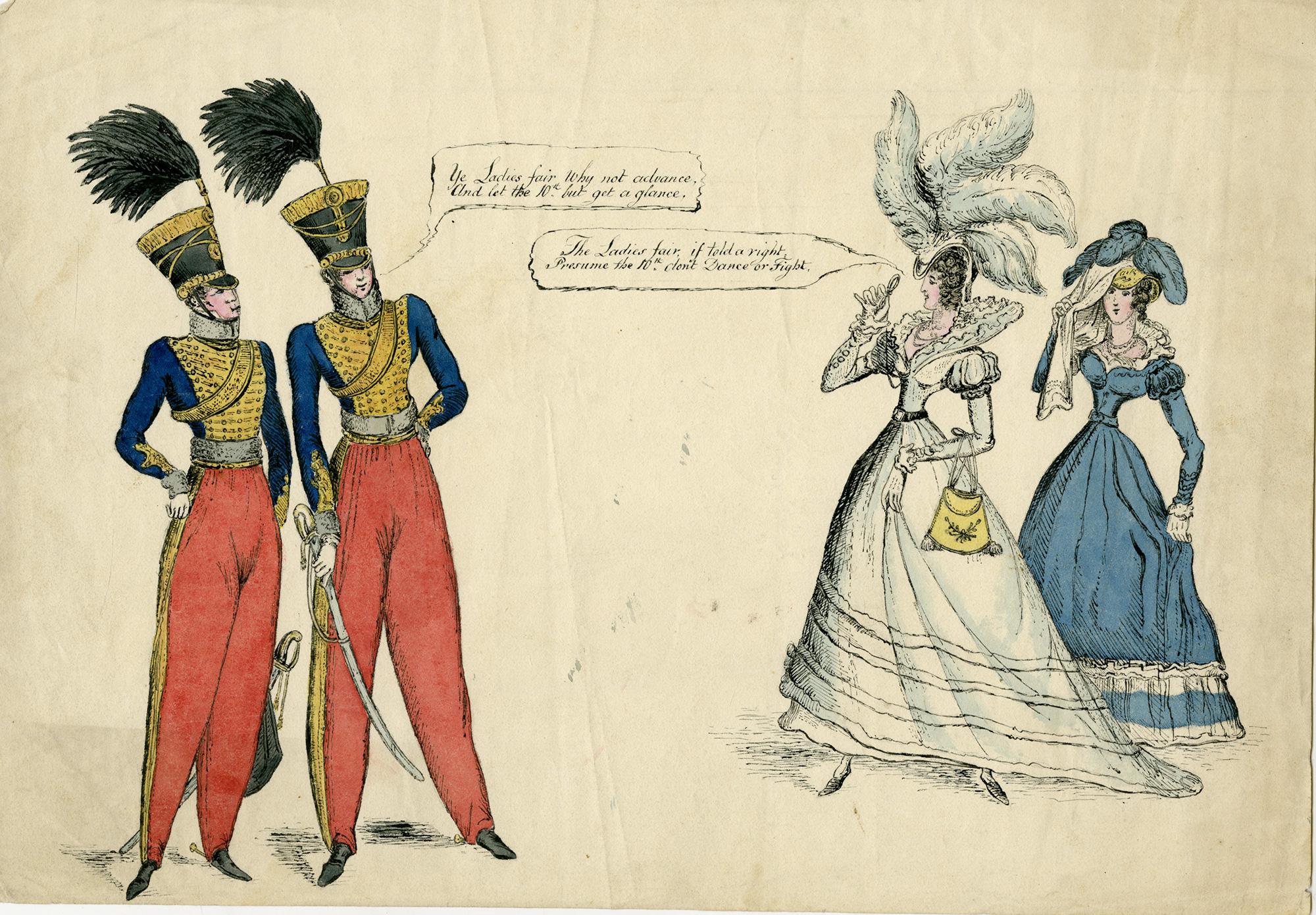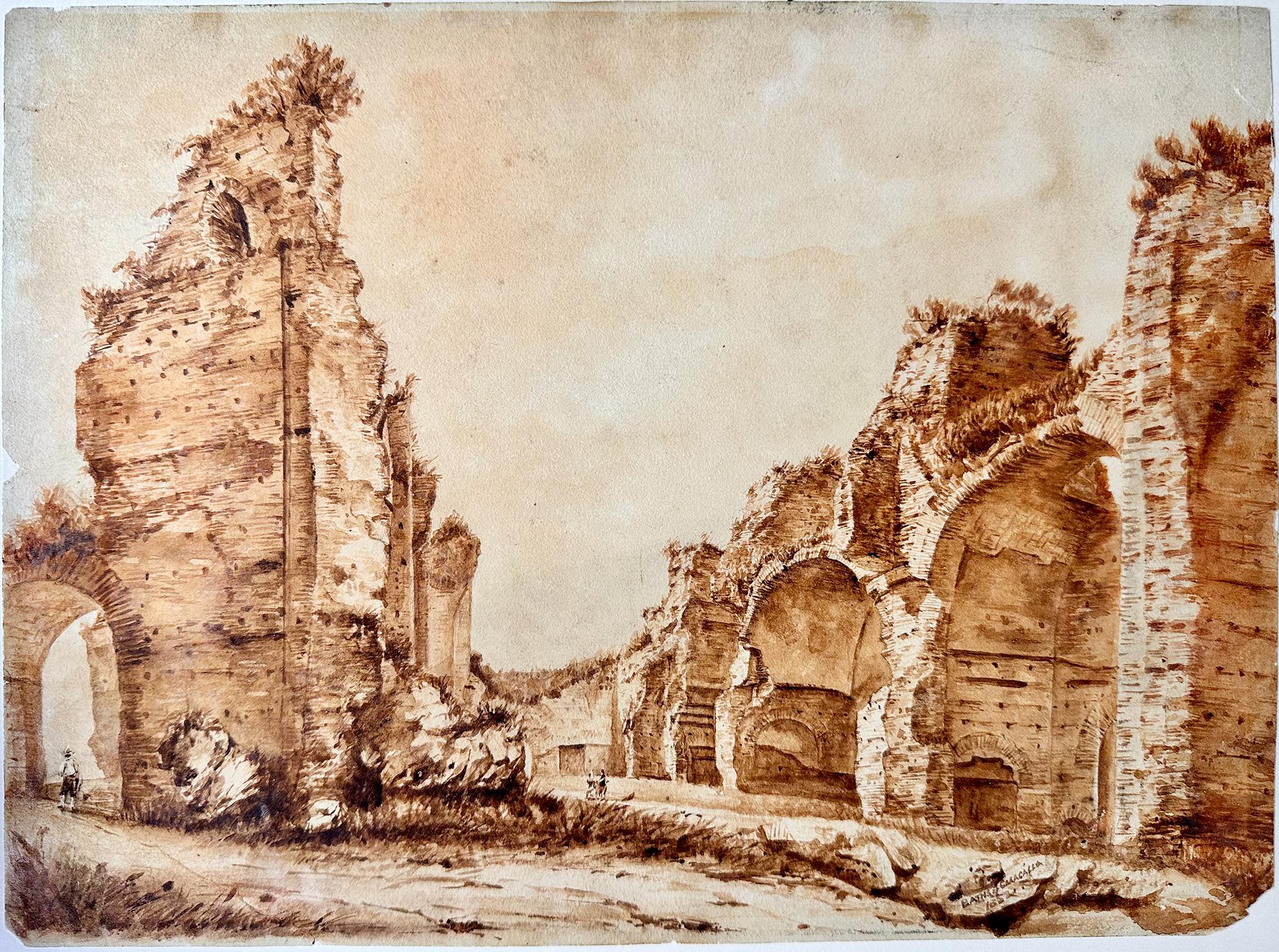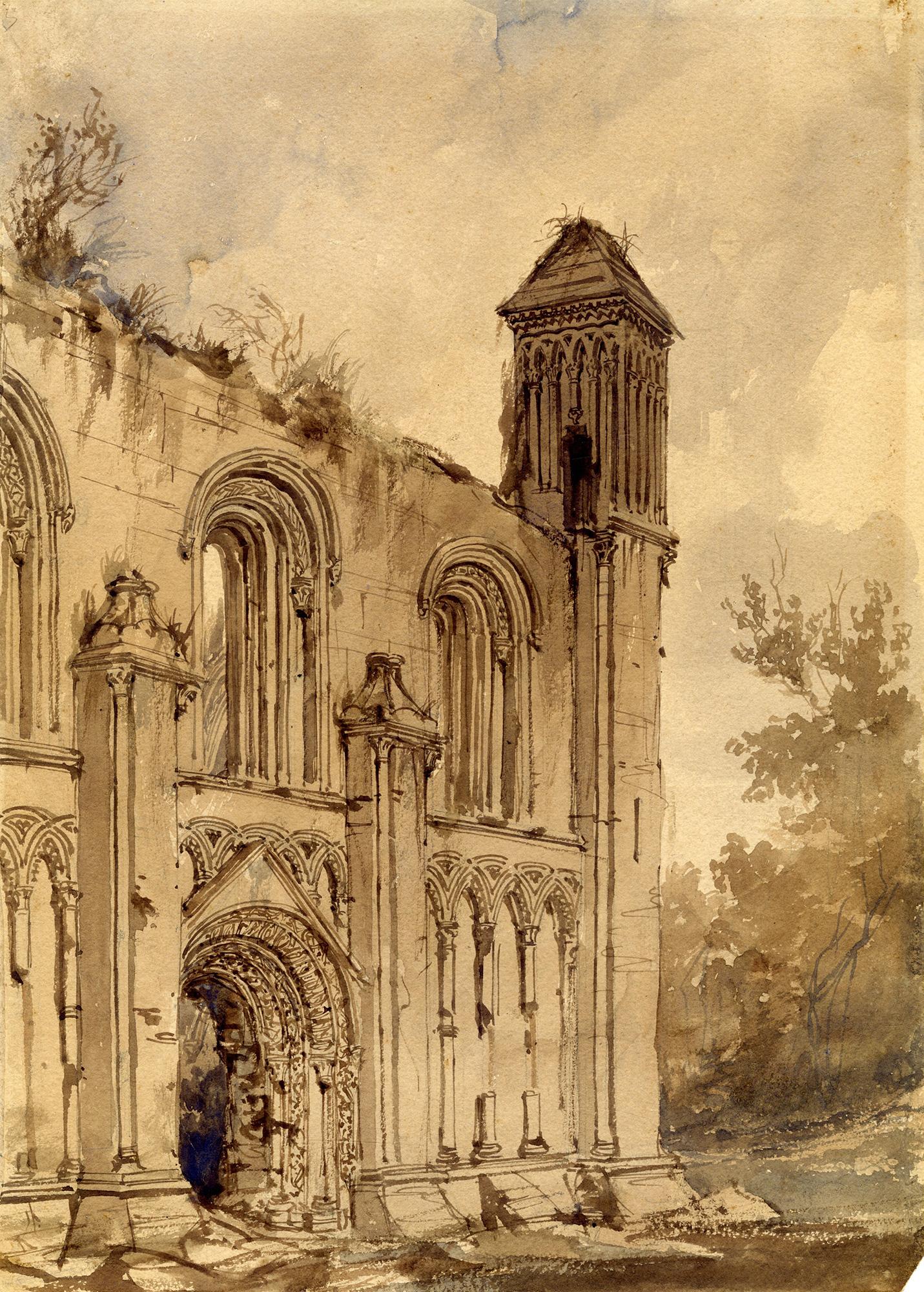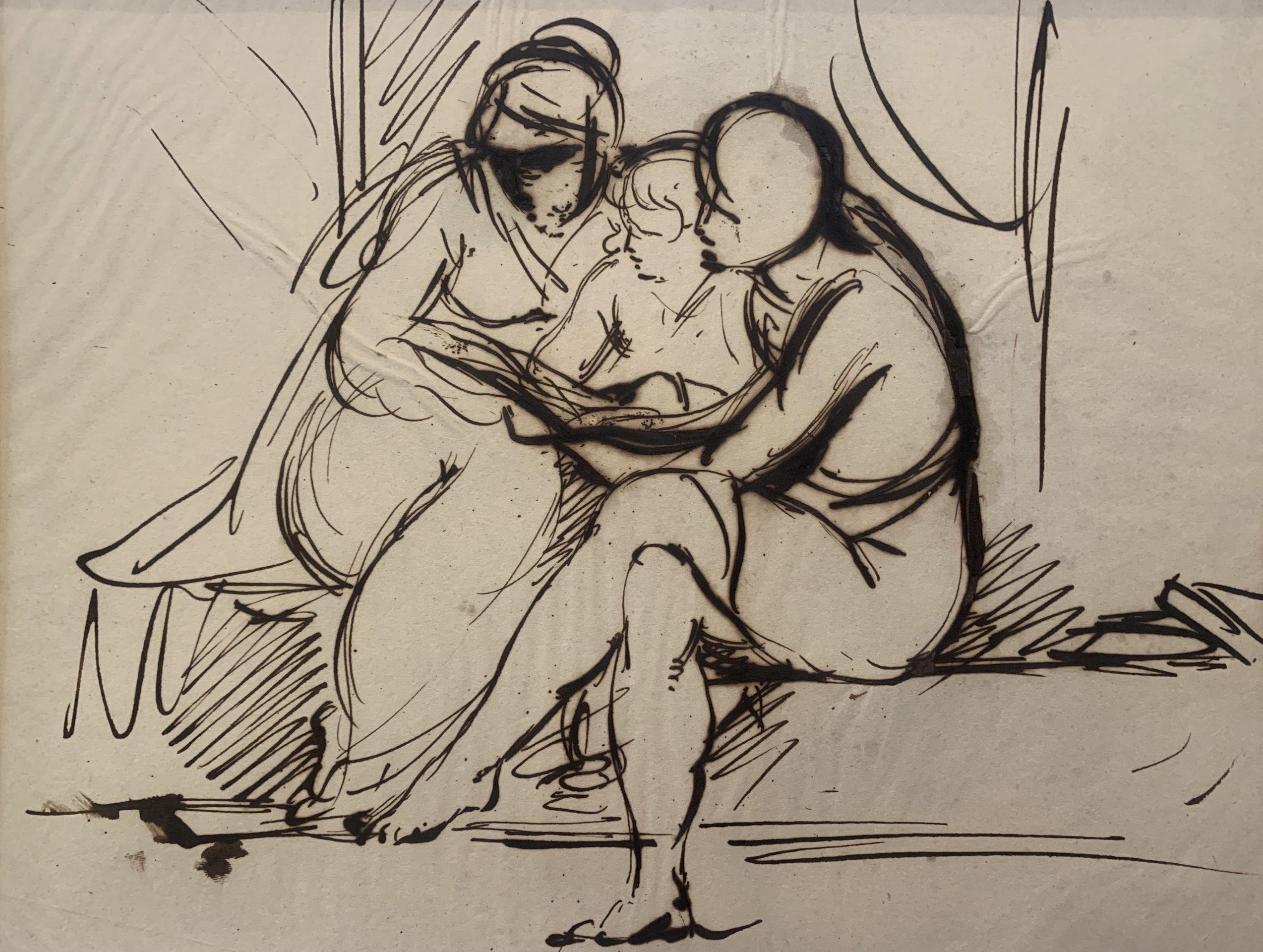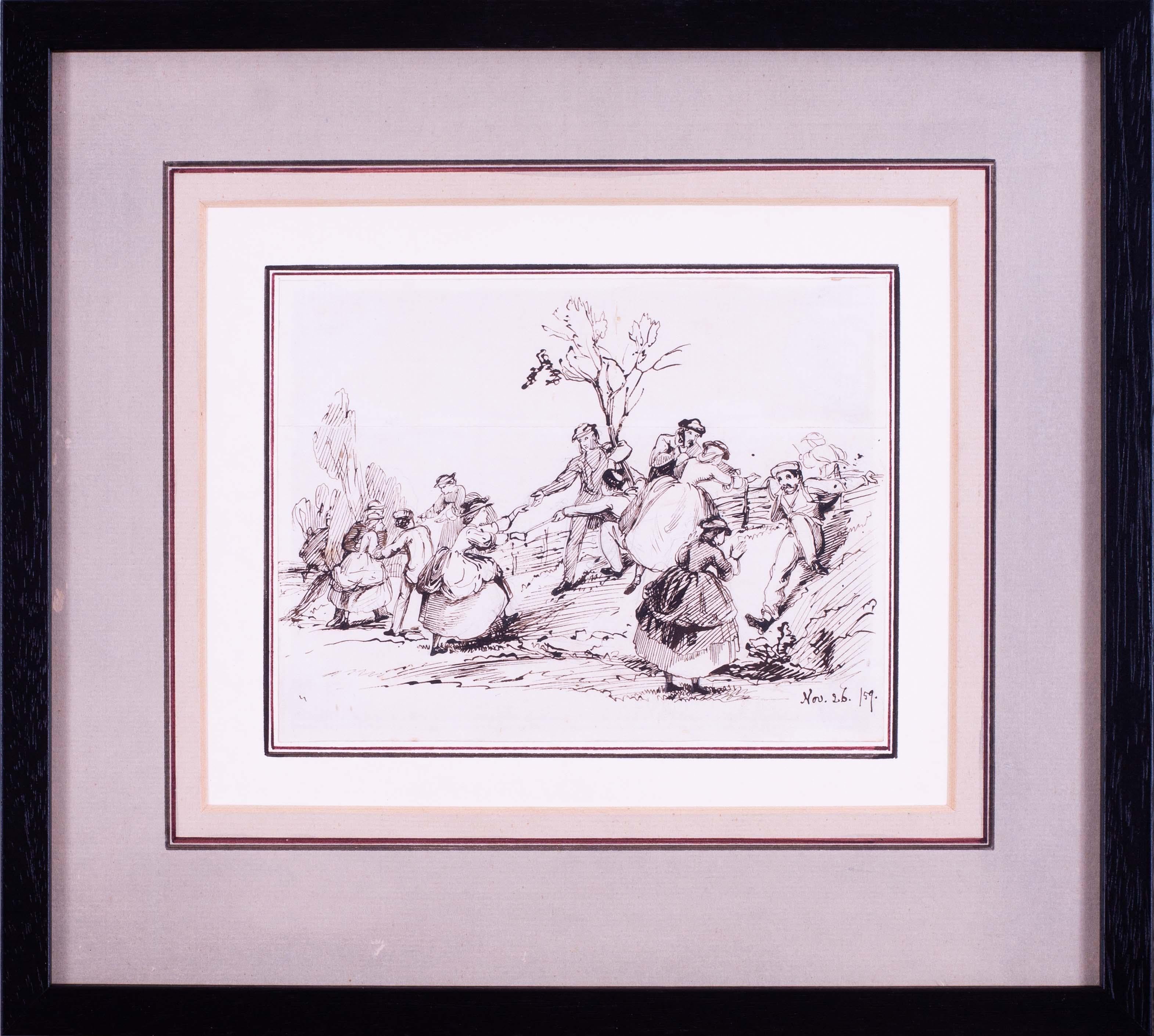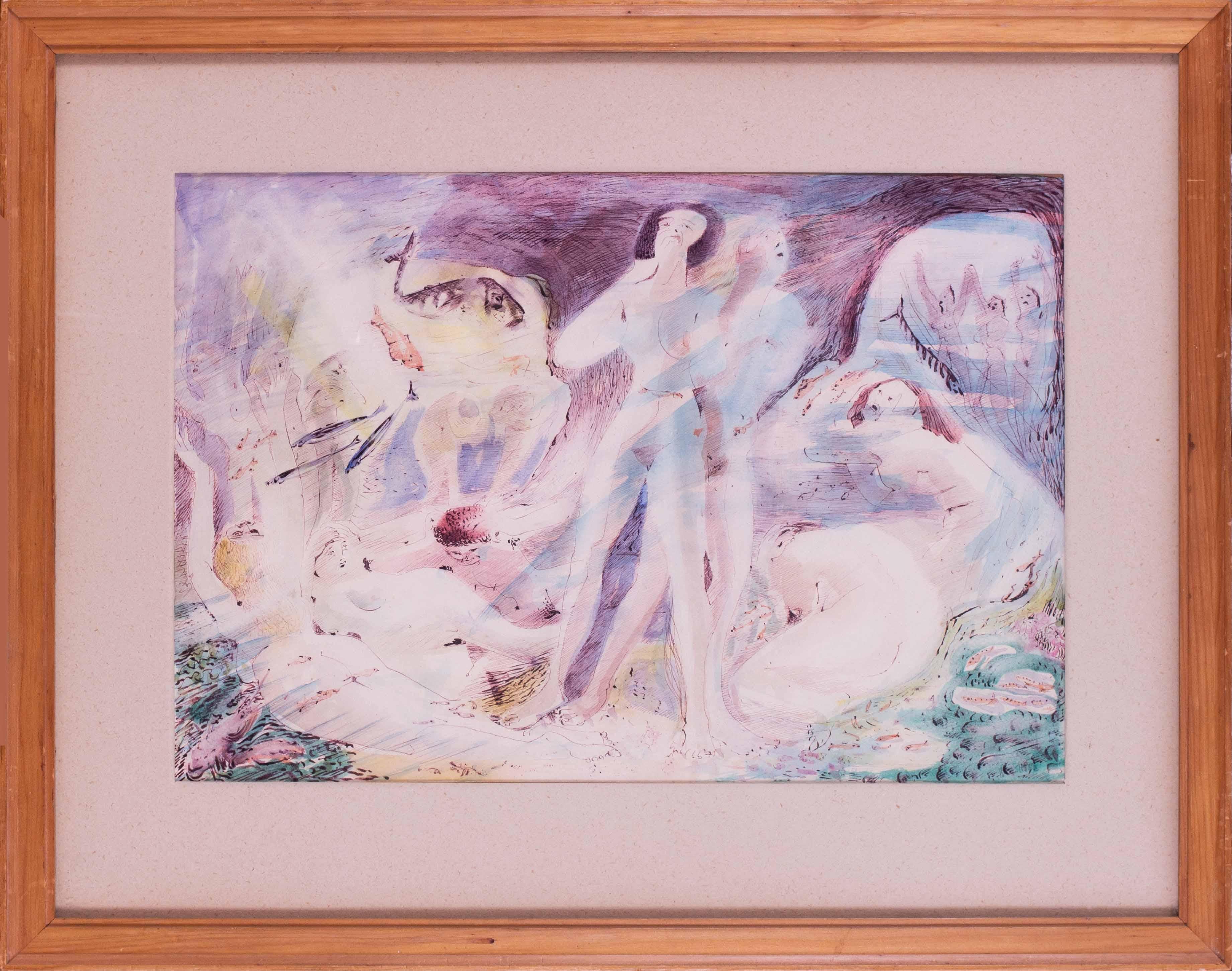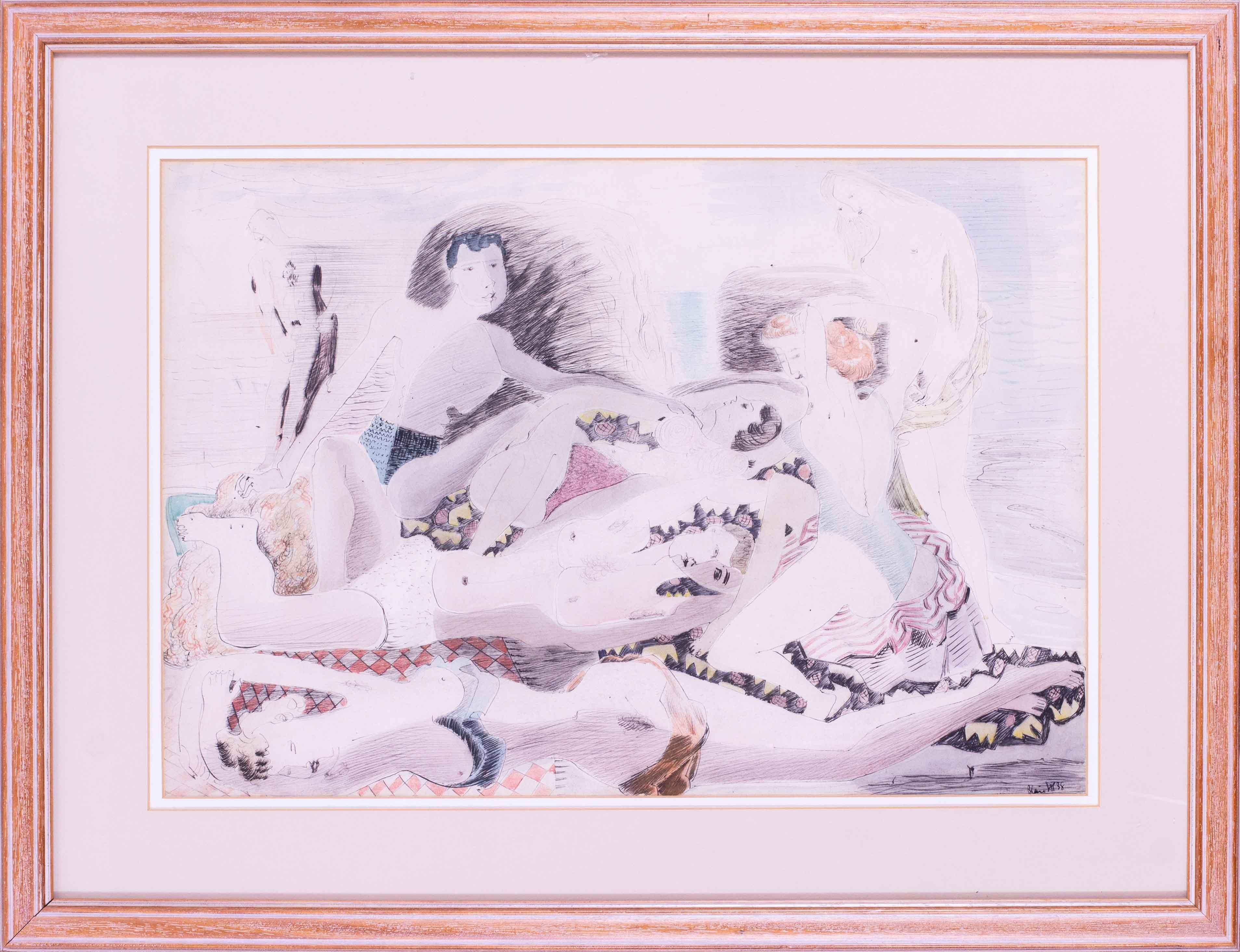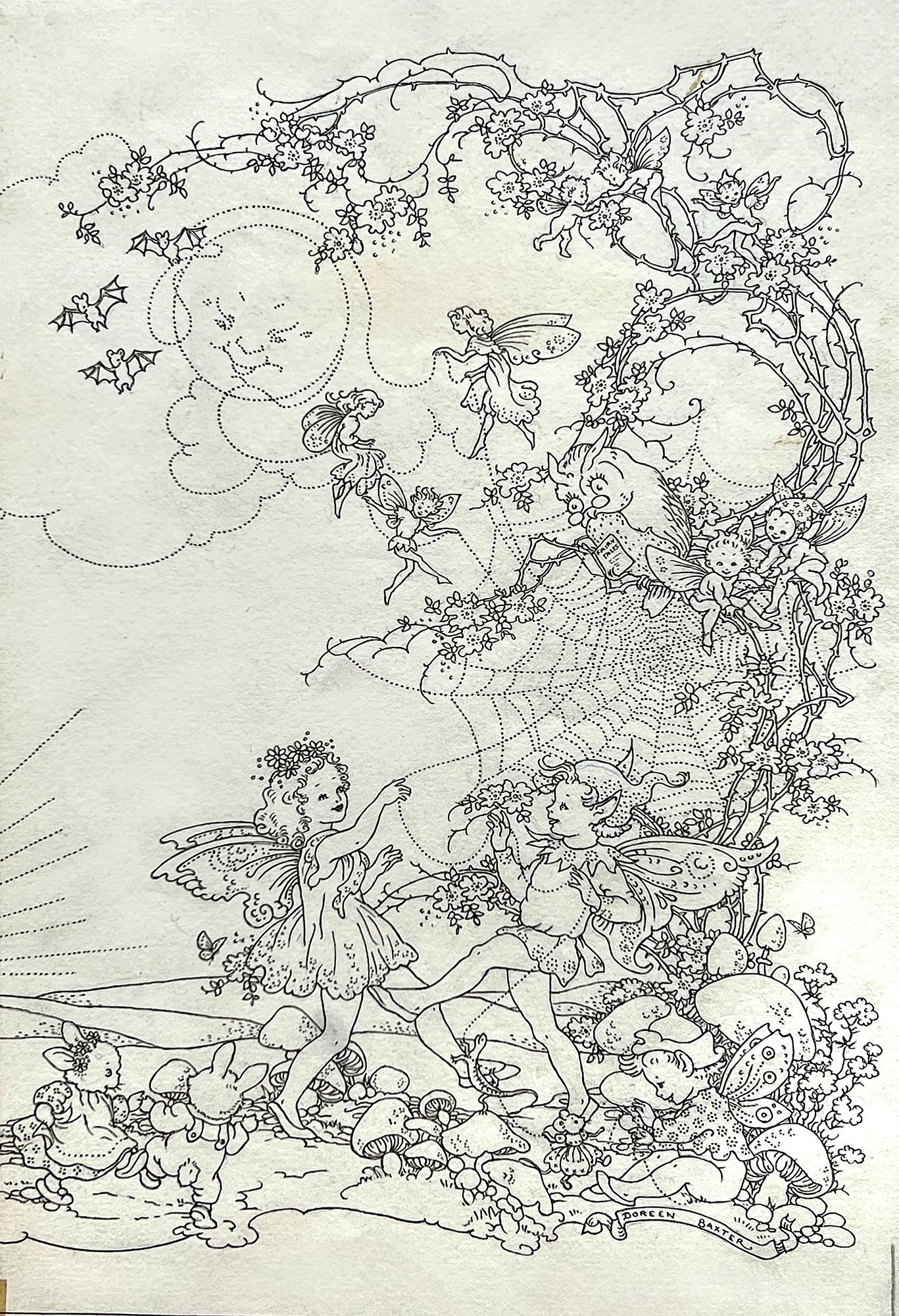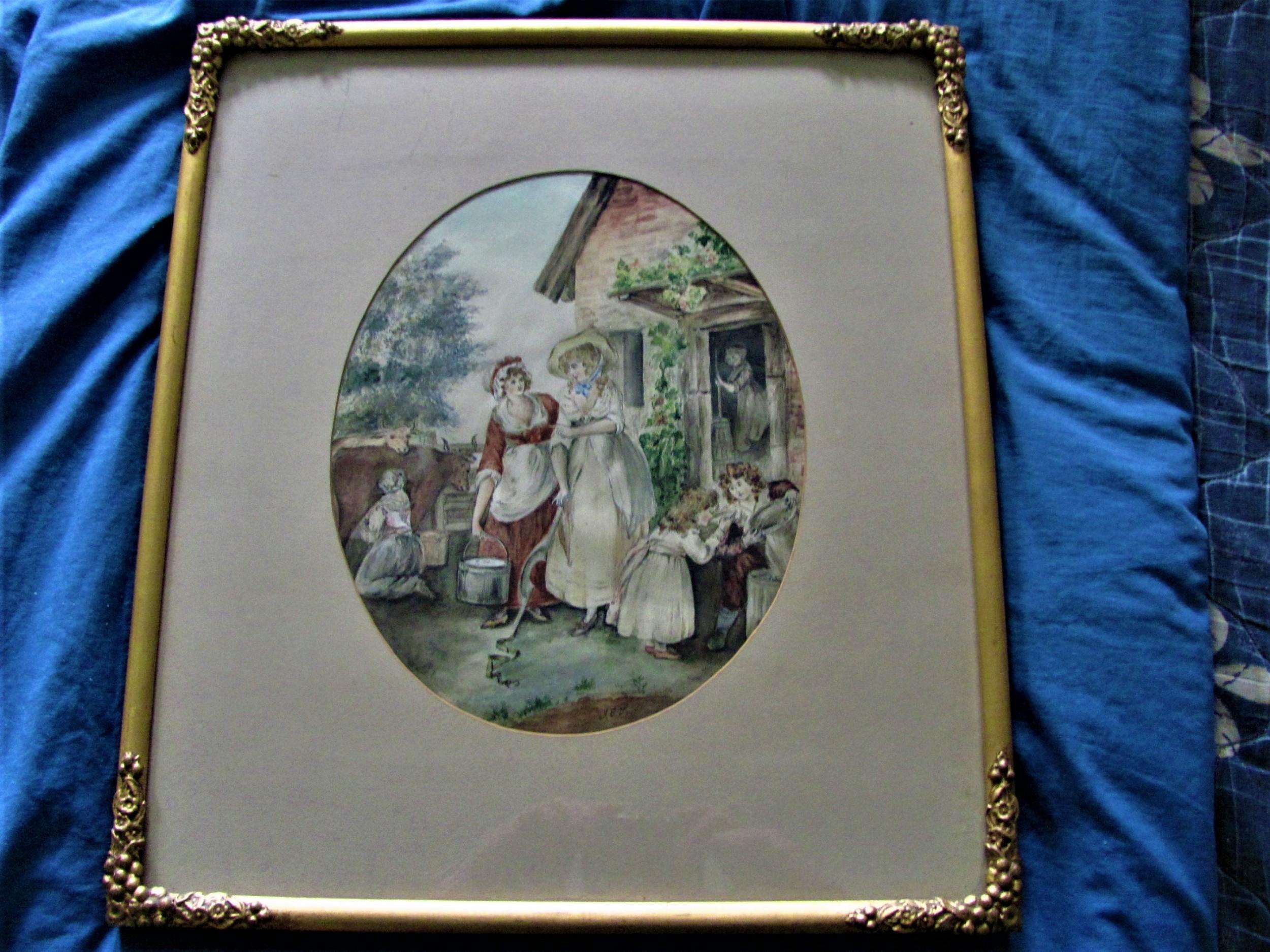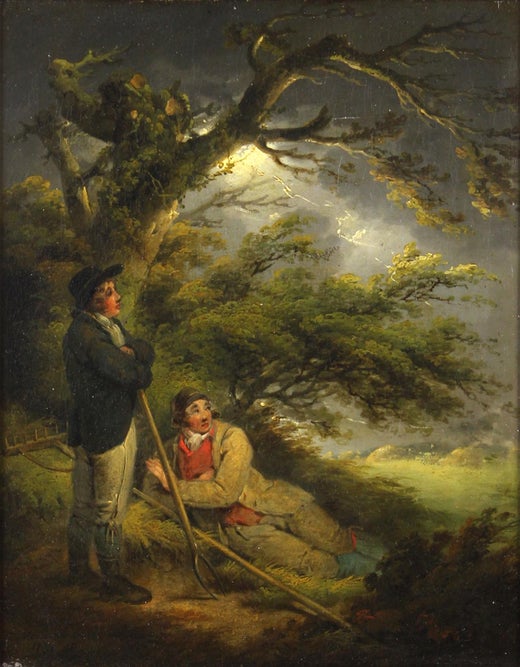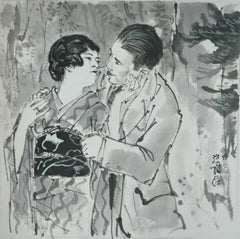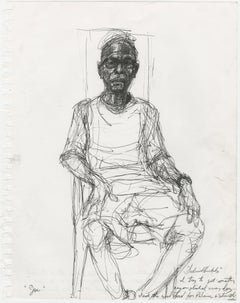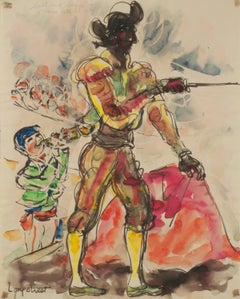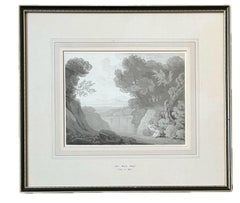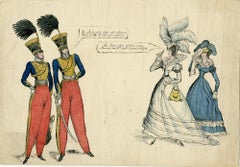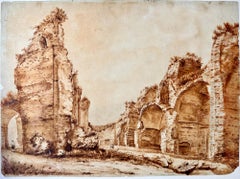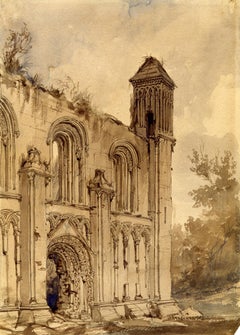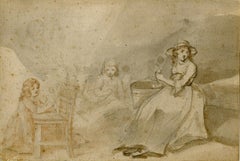
Family Group
Want more images or videos?
Request additional images or videos from the seller
1 of 13
George MorlandFamily Group
$5,500List Price
About the Item
- Creator:George Morland (1763 - 1804, English)
- Dimensions:Height: 6.38 in (16.21 cm)Width: 9.5 in (24.13 cm)
- Medium:
- Movement & Style:
- Period:1790-1799
- Condition:
- Gallery Location:Fairlawn, OH
- Reference Number:Seller: FA81381stDibs: LU14010100532
George Morland
George Morland (26 June 1763 in London – 29 October 1804 in Brighton) was an English painter. His early work was influenced by Francis Wheatley but after the 1790s he came into his own style. His best compositions focus on rustic scenes: farms and hunting; smugglers and gypsies; and rich, textured landscapes informed by Dutch Golden Age painting.
About the Seller
5.0
Recognized Seller
These prestigious sellers are industry leaders and represent the highest echelon for item quality and design.
Gold Seller
Premium sellers maintaining a 4.3+ rating and 24-hour response times
Established in 1978
1stDibs seller since 2013
796 sales on 1stDibs
Associations
International Fine Print Dealers Association
Authenticity Guarantee
In the unlikely event there’s an issue with an item’s authenticity, contact us within 1 year for a full refund. DetailsMoney-Back Guarantee
If your item is not as described, is damaged in transit, or does not arrive, contact us within 7 days for a full refund. Details24-Hour Cancellation
You have a 24-hour grace period in which to reconsider your purchase, with no questions asked.Vetted Professional Sellers
Our world-class sellers must adhere to strict standards for service and quality, maintaining the integrity of our listings.Price-Match Guarantee
If you find that a seller listed the same item for a lower price elsewhere, we’ll match it.Trusted Global Delivery
Our best-in-class carrier network provides specialized shipping options worldwide, including custom delivery.More From This Seller
View AllFamily Group
By George Morland
Located in Fairlawn, OH
Family Group
Drawing in Chinese white, sepia and bistre ink, c. 1790
Signed lower left: G. Morland (see photo)
The present work appears to be a preliminary study for two Morland paintings where the artist uses portions of this preliminary study in finished exhibition paintings. The strongest association is with the painting entitled The Cottage Door (1790), now in the collection of Royal Holloway College, University of London. Morland uses the same small girl (on left side of this sheet) holding a doll on a chair in the exact same pose. The second painting entitled The Tea Garden (Tate Gallery, London, c. 1790) incorporates similar poses and gestures of the three other figure studies on this sheet.
Provenance: Colnaghi, London (Stock # D25924, see photo)
Maynard Walker Gallery, New York ( see photo of label)
Davis Galleries, New York, their Eagle stamp and stock number (see photo)
Ms. Gloria Kaplan (1930-2011) New York City
Regarding Maynard Walker:
Maynard Walker New York Times obit:
"Maynard Walker, an art dealer in New York City for nearly 40 years who was among the first to show the works of leading American regionalist painters, died of pneumonia Tuesday at St. Joseph's Hospital in Carbondale, Pa. He was 89 years old and lived in Lake Ariel, Pa.
In 1933, while working at the Ferargil Gallery in New York, Mr. Walker organized an exhibition for the Kansas City Art Institute that for the first time brought together the work of the regionalist painters Grant Wood, Thomas Hart Benton and John Steuart Curry.
After Mr. Walker opened his own gallery, at 108 East 57th Street, in 1935, these artists joined him and showed regularly there. The gallery was also among the first to show the work of George Grosz, the German painter and caricaturist, who moved to the United States in 1932. The gallery moved to 117 East 57th Street after the war."
Condition: Aging to paper
Slight fading to ink
Tiny spotting in image
All consistent with the age of the drawing
Image size: 6 3/8 x 9 1/2 inches
Frame size: 14 1/4 x 17 1/4 inches
George Morland was born in London on 26 June 1763. He was the son of Henry Robert Morland, and grandson of George Henry Morland, said by Cunningham to have been lineally descended from Sir Samuel Morland, while other biographers go so far as to say that he had only to claim the baronetcy in order to get it. Morland began to draw at the age of three years, and at the age of ten (1773) his name appears as an honorary exhibitor of sketches at the Royal Academy. He continued to exhibit at the Free Society in 1775 and 1776, and at the Society of Artists in 1777, and then again at the Royal Academy in 1778, 1779 and 1780.
His talents were carefully cultivated by his father, who was accused of stimulating them unduly with a view to his own profit, shutting the child up in a garret to make drawings from pictures and casts for which he found a ready sale. The boy, on the other hand, is said to have soon found a way to make money for himself by hiding some of his drawings, and lowering them at nightfall out of his window to young accomplices, with whom he used to spend the proceeds in frolic and self-indulgence. It has been also asserted that his father, discovering this trick, tried to conciliate him by indulgence, humouring his whims and encouraging his low tastes.
He was set by his father to copy pictures of all kinds, but especially of the Dutch and Flemish masters. Among others he copied Fuseli's Nightmare and Reynolds's Garrick between Tragedy and Comedy. He was also introduced to Sir Joshua Reynolds, and obtained permission to copy his pictures, and all accounts agree that before he was seventeen he had obtained considerable reputation not only with his friends and the dealers, but among artists of repute. A convincing proof of the skill in original composition which he had then attained is the fine engraving.
It is said that before his apprenticeship to his father came to an end, in 1784, Romney offered to take him into his own house, with a salary of £300, on condition of his signing articles for three years. But Morland, we are told, had had enough of restraint, and after a rupture with his father he set up on his own account in 1784 or 1785 at the house of a picture dealer, and commenced that life which, in its combination of hard work and hard drinking, is almost without a parallel.
Morland soon became the mere slave of the dealer with whom he lived. His boon companions were "ostlers, potboys, horse jockeys, moneylenders, pawnbrokers, punks, and pugilists." In this company the handsome young artist swaggered, dressed in a green coat, with large yellow buttons, leather breeches, and top boots. "He was in the very extreme of foppish puppeyism", says Hassell; "his head, when ornamented according to his own taste, resembled a snowball, after the model of Tippey Bob, of dramatic memory, to which was attached a short, thick tail, not unlike a painter's brush." His youth and strong constitution enabled him to recover rapidly from his excesses, and he not only employed the intervals in painting, but at this time, or shortly afterwards, taught himself to play the violin. He made also an effort, and a successful one, to free himself from his task-master, and escaped to Margate, where he painted miniatures for a while. In 1785 he paid a short visit to France, whither his fame had preceded him, and where he had no lack of commissions.
Returning to London, he lodged in a house at Kensal Green, on the road to Harrow, near William Ward, intercourse with whose family seems for a time to have had a steadying influence. It resulted in his marriage with Miss Anne Ward...
Category
1790s English School Figurative Drawings and Watercolors
Materials
Ink
Couple Embracing
By Ito Shinsui
Located in Fairlawn, OH
Couple Embracing
Sumi ink drawing, c. 1928
Signed lower right: Shinsui (early variant signature)
Most probably an illustration for one of the four volum...
Category
1920s Figurative Drawings and Watercolors
Materials
Ink
Joe "I try to get something accomplished everyday. I ask the Good Lord...
By Sedrick Huckaby
Located in Fairlawn, OH
Joe "I try to get something accomplished everyday. I ask the Good Lord for Patience and Stregnth"
Verso: "I was in for a technical violation. I spent 65 days, but I thank the Lor...
Category
2010s Contemporary Figurative Drawings and Watercolors
Materials
Ink
Bull Ring Brass - Mexico City
By Stephen Longstreet
Located in Fairlawn, OH
Bull Ring Brass - Mexico City
Watercolor, pen and ink on paper, 1955
Signed in ink, dated and titled in pencil (see photos)
Condition: 1'' repaired tear left edge, along with other minor tears.
Tape stains from previous matting visible in the four corners
Image/Sheet size: 19 3/8 x 15 5/8 inches
Provenance: Acquired directly from the Artist
Joseph M. Erdelac, Cleveland, friend and
patron of Longstreet
Stephen Longstreet (1907-2002)
The artist’s own grandchildren attempt to fathom the real life and nature of Stephen Longstreet, prolific author, artist, screenplay writer, and jazz aficionado.
Born Chauncy Weiner (sometimes spelled Wiener) in New York City in 1907, Longstreet reinvented himself on a regular basis. Changing his name first to “Henry,” then “Henri,” he started his career as a commercial artist for a department store. In various public biographies he claimed to have studied in New York, London, and Paris, and said he was a student of cartoonist Ralph Barton (1891-1931). Facts that can be documented are that he was art editor for Golfer and Sportsman magazines, and was a contributor to various other magazines including The New Yorker, Saturday Evening Post, Colliers, Life, and Hooey, among others. He wrote sketches for NBC radio and the Rudy Vallee Show.
In the 1930s, Longstreet worked and wrote under the names Thomas Burton, David Ormsbee, and Paul Haggard...
Category
1950s American Modern Figurative Drawings and Watercolors
Materials
India Ink, Watercolor, Pen
Untitled (Joe Louis knocking out Max Schmeling in 1938 rematch)
By Fletcher Martin
Located in Fairlawn, OH
Untitled
(Joe Louis knocking out Max Schmeling in 1938 rematch)
Pen and ink with wash on heavy wove sketchbook paper, 1938
Signed lower right: Fletcher Martin
Directly related to Martin's famous painting of 1942 entitled "Lullaby", which was also used in the lithograph of the same name. (see photo)
The drawing depicts the third and final knockdown of Max Schmeling in their rematch of 1938.
Condition: Mat staining at the edges of the sketchbook page edges
Toning to verso from previous framing.
Does not affect framed presentation
"It was here that Louis first used sport to bridge America's cavernous racial divide. With Hitler on the march in Europe and using Schmeling's victory over Louis as proof of “Aryan supremacy,” anti-Nazi sentiment ran high in the States. Louis had long grown accustomed to the pressures of representing his race but here the burdens were broader and deeper. Now he was shouldering the hopes of an entire nation.
A few weeks before the match Louis visited the White House and U.S. President Franklin Delano Roosevelt, whose tenure lasted even longer than Louis' would, told him, “Joe, we need muscles like yours to beat Germany.”
Those muscles certainly beat Schmeling on fight night...
Category
1930s American Realist Figurative Drawings and Watercolors
Materials
Ink
Believe in Jesus and be saved from everlasting Hell
By Adolf Arthur Dehn
Located in Fairlawn, OH
Signed and dated lower right
Provenance:
Estate of the artist
Ink on paper
Category
1920s Figurative Drawings and Watercolors
Materials
India Ink
You May Also Like
John White Abbott, Early English watercolor, Abraham and Isaac
By John White Abbott
Located in Harkstead, GB
A most attractive watercolor by one of the forefathers of British watercolour painting.
John White Abbott (1763-1851)
Abraham and Isaac in an extensive landscape
Pen, ink and wash
7...
Category
Early 19th Century English School Landscape Drawings and Watercolors
Materials
Paper, Ink, Watercolor, Pen
$1,065 Sale Price
30% Off
Chesterfield Sent to Coventry, or A Display of Military Education
Located in Middletown, NY
A wonderful 1824 preparatory drawing for a published work satirizing the famously ill-mannered 10th Hussars.
1842. Pen and ink with watercolor on watermarked J Whatman 1824 paper, 9...
Category
Mid-19th Century English School Figurative Drawings and Watercolors
Materials
Handmade Paper, Ink, Watercolor, Pen
Baths of Caracalla, Rome
Located in Middletown, NY
English School, 19th century. Baths at Caracalla, Rome. 1852.
Ink wash in brown ink on cream wove paper, 9 7/8 x 13 inches (250 x 330 mm), titled and dated in brown ink, lower right...
Category
Mid-19th Century English School Landscape Drawings and Watercolors
Materials
Handmade Paper, Ink
Glastonbury Abbey
By Frederick Nash
Located in Middletown, NY
Ink wash with watercolor in sepia and black, and blue, on buff wove watercolor paper, 14 1/4 x 10 1/4 inches (360 x 260 mm). 1/4" of the lower right corner is lost, minor crack (doe...
Category
Mid-19th Century English School Landscape Drawings and Watercolors
Materials
Ink, Watercolor, Handmade Paper
The Pilgrim Fathers Plymouth Rock Pen & Ink Sketch Figures & Animals Coastline
Located in Cirencester, Gloucestershire
The Pilgrim Fathers Landing at Plymouth Rock
Anglo/ America School, early 20th century
ink/ watercolor on paper stuck on board, framed - glass covered
framed: 12 x 14 inches
board : 6.5 x 8 inches
Provenance: private collection, Cotswolds, England
Condition: very good condition
The scene possibly depicts the Pilgrim Fathers landing in the 'New World', particularly at Plymouth Rock in 1620. The visual elements support this interpretation:
The central figure in dark clothing and a wide-brimmed hat: This could represent a leader like William Bradford or John Carver...
Category
Early 20th Century English School Figurative Paintings
Materials
Ink
Sketch of Three Figures
Located in London, GB
Benjamin Robert Haydon
1786 - 1846
Sketch of Three Figures
Pen and ink on paper,
Image size: 9 3/4 x 7 3/4 inches (25 x 20 cm)
Acid Free mount, original frame
Provenance
Private Col...
Category
18th Century English School Figurative Drawings and Watercolors
Materials
Paper, Ink, Pen
